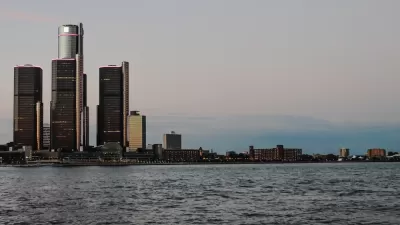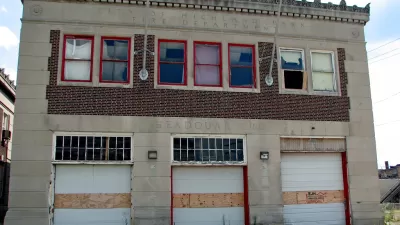The decline of Detroit can't be completely explained by the decline of the U.S. auto industry, according to an editorial commemorating the 50th anniversary of a five-day period of rioting and protest that resonates to this day.

Peter Saunders writes:
Fifty years ago today, the violent conflict that virtually defined Detroit finally began to wane, after five tension-filled days. Since that conflict Detroit has suffered immeasurably, far beyond what economic loss could do alone. Over the last decade or so, Detroit has finally become able to move on from the specter of the unrest. The city’s long era of ostracization is over, and it’s slowly reconnecting with the family of cities in America and around the world.
Saunders says the events of the summer of 1967 (depicted in the new movie Detroit, directed by Oscar winner Kathryn Bigelow) left a stigma on the city. The "shunning" of Detroit wasn't uncommon around the country.
The shunning suffered by Detroit and a handful of other cities that experienced similar unrest is often understood as “white flight”, but is indeed far deeper. White flight can describe many things. It can describe the aspirational lure of city residents seeking more space and comfort in greener suburban pastures. Yet it can also obscure more nefarious reasons for moving – motivated by fear of rising crime and falling property values. The former is a shining aspect of the American Dream; the latter can be viewed as an act of desperation and self-preservation.
The concept Saunders drives home to the reader is the aforementioned shunning, and the article includes a lot of evidence that describes the scope of the shunning's effects, along with calling out some of the ways that suburban leaders around Detroit enacted the shunning as official public policy. Though Saunders acknowledges that the shunning has ended, there is still a great deal of skepticism about the city's ongoing recovery.
FULL STORY: Detroit Emerges From The Shunning

Alabama: Trump Terminates Settlements for Black Communities Harmed By Raw Sewage
Trump deemed the landmark civil rights agreement “illegal DEI and environmental justice policy.”

Planetizen Federal Action Tracker
A weekly monitor of how Trump’s orders and actions are impacting planners and planning in America.

The 120 Year Old Tiny Home Villages That Sheltered San Francisco’s Earthquake Refugees
More than a century ago, San Francisco mobilized to house thousands of residents displaced by the 1906 earthquake. Could their strategy offer a model for the present?

Ken Jennings Launches Transit Web Series
The Jeopardy champ wants you to ride public transit.

BLM To Rescind Public Lands Rule
The change will downgrade conservation, once again putting federal land at risk for mining and other extractive uses.

Indy Neighborhood Group Builds Temporary Multi-Use Path
Community members, aided in part by funding from the city, repurposed a vehicle lane to create a protected bike and pedestrian path for the summer season.
Urban Design for Planners 1: Software Tools
This six-course series explores essential urban design concepts using open source software and equips planners with the tools they need to participate fully in the urban design process.
Planning for Universal Design
Learn the tools for implementing Universal Design in planning regulations.
Clanton & Associates, Inc.
Jessamine County Fiscal Court
Institute for Housing and Urban Development Studies (IHS)
City of Grandview
Harvard GSD Executive Education
Toledo-Lucas County Plan Commissions
Salt Lake City
NYU Wagner Graduate School of Public Service





























